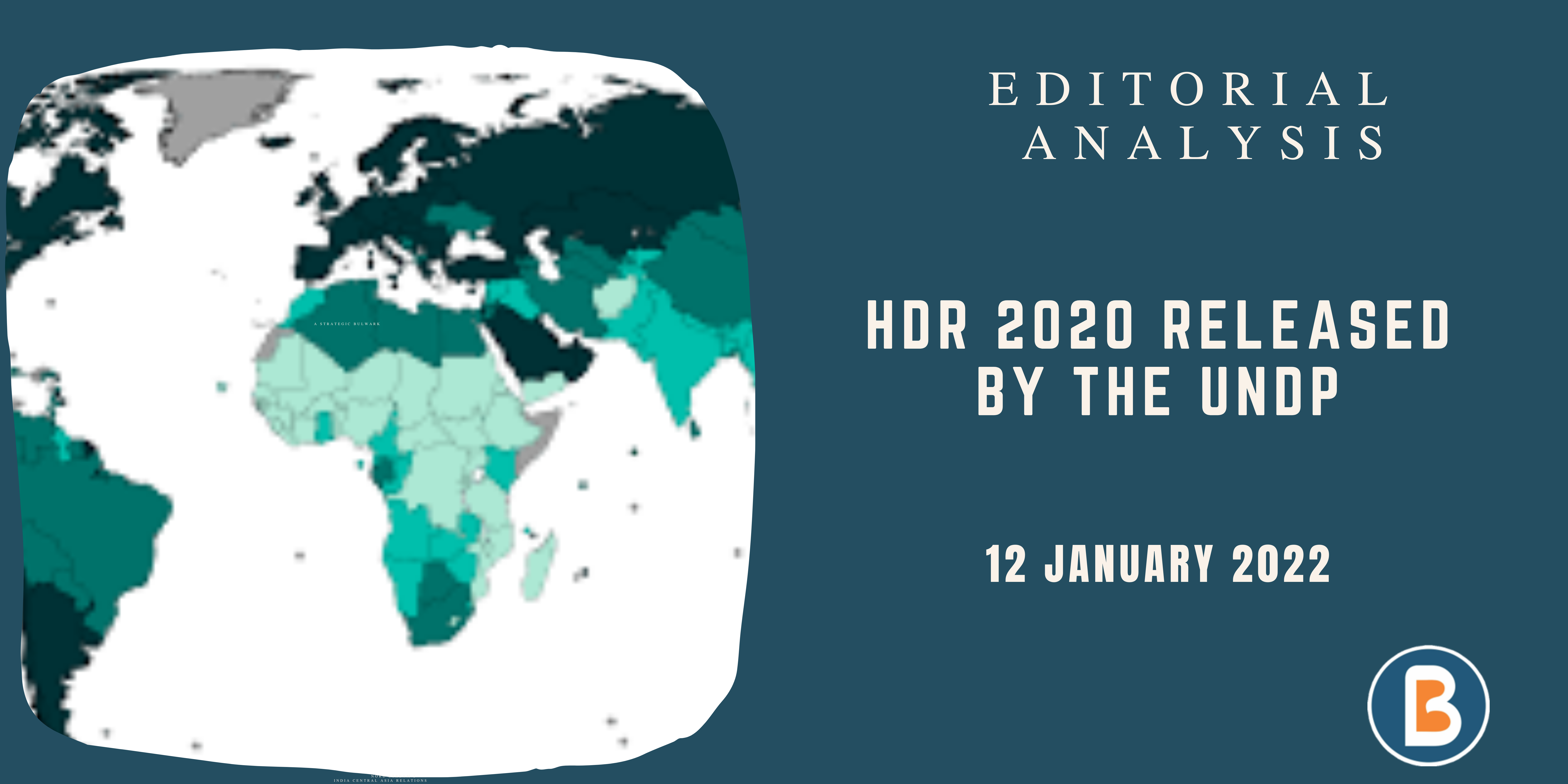HDR 2020 RELEASED BY THE UNDP
Introduction:
- According to the United Nations Development Program’s Human Development Report (HDR) 2020, India placed 131 out of 189 nations in the Human Development Index (HDI) for 2019, down two places from the previous year (UNDP).
- The planetary pressures-adjusted Human Development Index (HDI) was established in the 2020 Report, which adjusts the regular HDI by a country’s per capita carbon dioxide emissions and material footprint.
- Inequality-adjusted Human Development Index (IHDI), Gender Development Index (GDI), Gender Inequality Index (GII), and Multidimensional Poverty Index are the other indices included in the report (MPI).
About the report:
- The Human Development Index (HDI) measures how far people have progressed.
- About: The HDI emphasizes that people and their capacities, not just economic growth, should be the final criterion for judging a country’s progress.
- A long and healthy life, access to information, and a fair standard of living are the three basic dimensions of human development.
2019’s Best Performers:
- Norway was the highest-ranking country on the survey, followed by Ireland and Switzerland. The top five are Hong Kong and Iceland.
- In the worldwide ranking, Singapore was placed 11, Saudi Arabia was ranked 40, and Malaysia was ranked 62, indicating the top bracket of Asian countries with “extremely high human development.”
- Among the “high human development” countries were Sri Lanka (72), Thailand (79), China (85), Indonesia and the Philippines (both 107), and Vietnam (117).
- India, Bhutan, Bangladesh, Myanmar, Nepal, Cambodia, Kenya, and Pakistan were all classified in the “middle human development” category, with scores ranging from 120 to 156.
India’s Achievements:
Overall Achievement: The country’s HDI value for 2019 is 0.645, placing it 131 out of 189 countries and territories in the medium human development category.
- India’s HDI value improved by 50.3 percent from 0.429 to 0.645 between 1990 and 2019.
- Long and Healthy Life: In 2019, the average life expectancy in India was 69.7 years, slightly lower than the South Asian average of 69.9 years.
- India’s life expectancy at birth grew by 11.8 years between 1990 and 2019.
Access to Knowledge: The average number of years spent in school in India was 12.2, compared to 11.2 in Bangladesh and 8.3 in Pakistan.
- Between 1990 and 2019, the average number of years spent in school increased by 3.5 years, whereas the predicted number of years spent in school climbed by 4.5 years.
A Reasonable Standard of Living: Despite a drop from the previous year, India’s GNI per capita of USD 6,681 was higher than that of certain other countries in 2019.
- Between 1990 and 2019, India’s GNI per capita increased by around 273.9 percent.
- Human Development Index (PHDI) adjusted for planetary pressures:
- About the PHDI: The PHDI adjusts the regular HDI by a country’s per capita carbon dioxide emissions and material footprint.
The Countries’ Performance:
- If this statistic is employed, Norway, which currently leads the HDI, drops 15 places, leaving Ireland at the top of the table.
- Because of their disproportionate influence on natural resources, the United States (HDI Rank -17) and Canada (HDI Rank -16) would drop 45 and 40 places, respectively.
- The Gulf States, which are wealthy in oil and gas, also sank sharply. China’s current rating of 85 would decrease 16 places.
- India’s Position: India would rise eight spots in the rankings.
- India committed to reducing its GDP emission intensity by 33-35 percent by 2030, compared to 2005 levels, and to obtaining 40 percent of electric power capacity from non-fossil fuel sources by 2030, as part of the Paris Agreement.
- India’s solar capacity expanded from 2.6 gigawatts in March 2014 to 30 gigawatts in July 2019, four years ahead of plan, achieving its objective of 20 gigawatts.
- India ranked fifth in terms of installed solar capacity in 2019.
- The National Solar Mission intends to promote solar energy for power generation and other applications so that it can compete with fossil fuel-based alternatives.
Source: THE HINDU.



